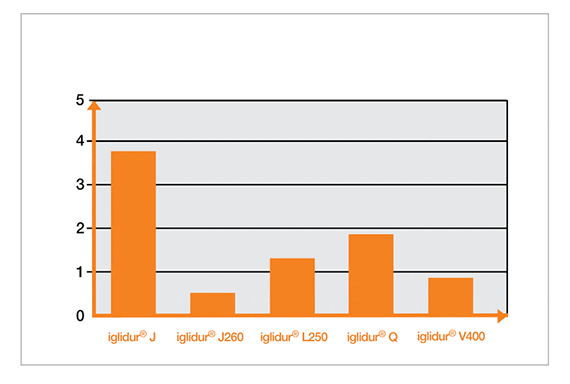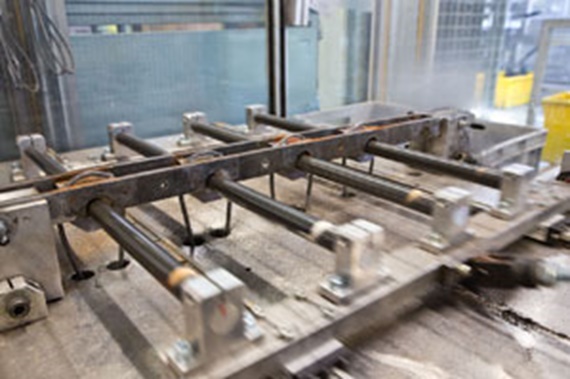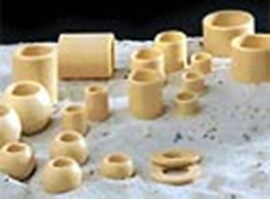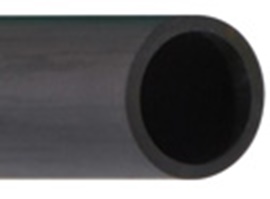After 2,560 test kilometres with carbon fibre shafts it is definite: iglidur® J260 is best suited for carbon fibre shafts
Especially where bulks are moved, it is becoming more and more important to install light and durable materials to save weight, energy and money.
Carbon fibre shafts in connection with different iglidur® bearings were tested. The determined wear rates of the individual materials are very different - and also partly surprising for the igus® material experts. Not every iglidur® material that belongs to the endurance runners on metal shafts performs well on carbon fibre shafts.
The combination of carbon fibre shafts and polymer bearings might sound too specific and impossible at first. But carbon fibre shafts are becoming more and more interesting for various applications due to their material properties. They are particularly characterised by their light weight and at the same time high flexural strength.
25 different high-performance polymers were tested in combination with carbon fibre shafts to find out which is the best combination regarding coefficient of wear. For this purpose, 2,560 kilometres were covered at a test rig for linear short strokes.
Here are some details from the test:
Carbon fibre shafts in connection with different iglidur® bearings were tested. The determined wear rates of the individual materials are very different - and also partly surprising for the igus® material experts. Not every iglidur® material that belongs to the endurance runners on metal shafts performs well on carbon fibre shafts.
The combination of carbon fibre shafts and polymer bearings might sound too specific and impossible at first. But carbon fibre shafts are becoming more and more interesting for various applications due to their material properties. They are particularly characterised by their light weight and at the same time high flexural strength.
25 different high-performance polymers were tested in combination with carbon fibre shafts to find out which is the best combination regarding coefficient of wear. For this purpose, 2,560 kilometres were covered at a test rig for linear short strokes.
Here are some details from the test:
Radial load of the bearings: 1MPa
Speed of the shaft during linear movement: 0.1m/s
Temperature: 23°C

Conclusion:
After 2,560 test kilometres with carbon fibre shafts it is definite: iglidur® J260 with a wear rate of 0.53 µm/km is best suited for carbon fibre shafts.
iglidur J - material data
iglidur® J - the fast and slow-motion specialistiglidur® J - Material data
More information on drylin carbon fibre shafts
You can find information and application examples here.drylin R carbon fibre shaft

